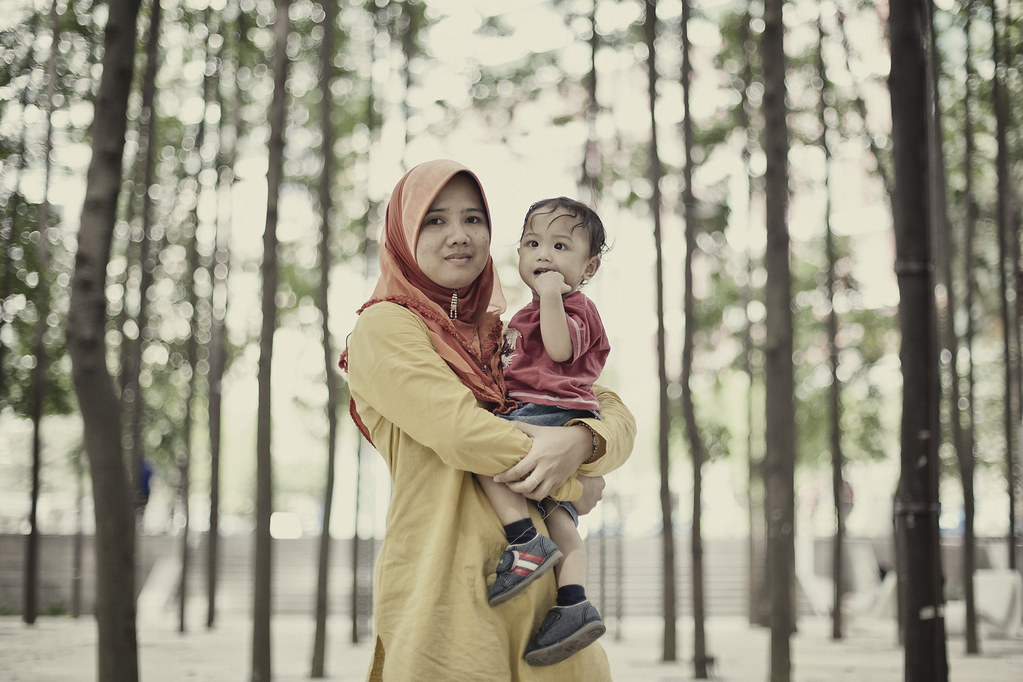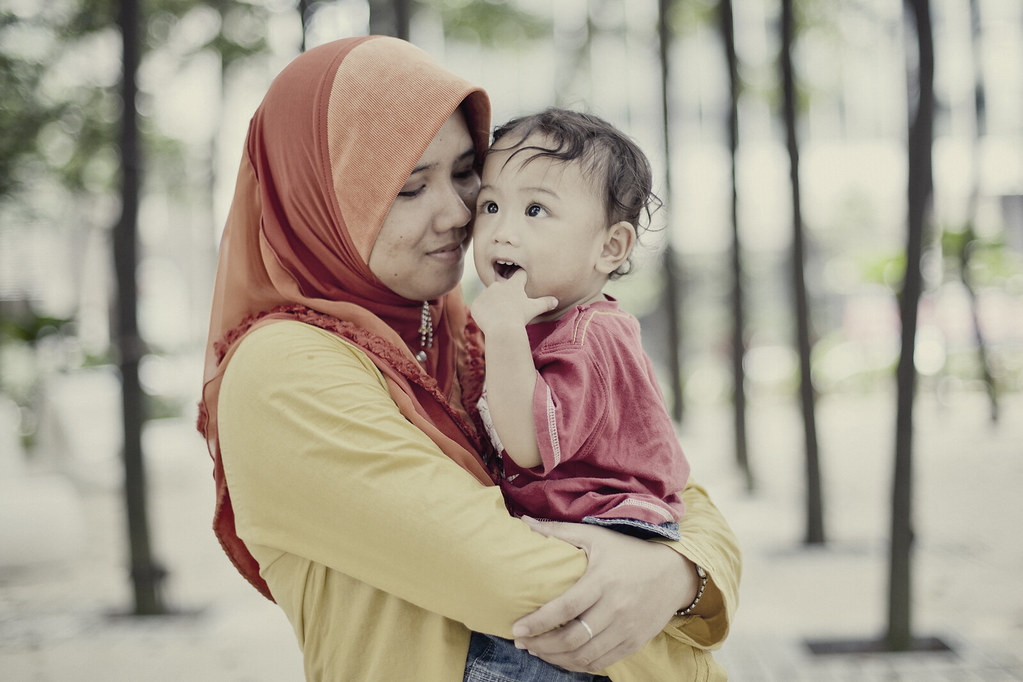Photography Tips | Simple Way on How To Get Great Bokeh
© 2012 Wazari Wazir | Mother and Son | 50mm | f/1.8 | ISO 200 | 1/250
“Bokeh” has evolved somewhat from its original meaning. Bokeh is now commonly used to refer to blurred lights or shapes within an image, where as, the term more accurately describes the aesthetic quality of the out-of-focus area of a photograph. Therefore, it is possible to have ‘good’ or ‘bad’ bokeh, (although that is purely subjective), but in essence, it’s all about the area of an image that falls outside the depth-of-field.
The term comes from the Japanese word boke (暈け or ボケ), which means “blur” or “haze”, or boke-aji (ボケ味), the “blur quality”. The Japanese term boke is also used in the sense of a mental haze or senility. The term bokashi(暈かし) is related, meaning intentional blurring or gradation.
Actually it is not that difficult to get a good quality bokeh, you can even get “Bokeh” using standard kit lens that comes with your camera but the bokeh will not be very good, the reason is that most kit lens don’t have very large aperture, most kit lens start from f/3.5 and when you zoom it out to get closer to your subject, the aperture will turn into f/5 or f/5.6, like Canon EF-S 18-135mm f/3.5-5.6.
You still can have good bokeh with kit lens 18-135mm with aperture f/3.5 or f/5.6, the tricks is, open up your aperture, let’s say your widest aperture is f/3.5 or f/4, then zoom it out, if you have 18-135mm, zoom it to 135mm, use that aperture and then make sure that the distance between your subject and your background is very far. The farther the better and make sure that you get very close to your subject, as close as you can, fill your frame with your subject.
For an example, in the first photograph above, I was a little bit farther from my wife, and you can see the quality of bokeh there and then I move closer to my wife and the quality of bokeh change completely, my wife still standing at the same position, she doesn’t move but I move to get closer to her.
For the photographs above I was using 50mm f/1.4 lens but I set the aperture to f/1.8. If you ask me, why I don’t use f/1.4, the reason is that if I’m using f/1.4, the depth of field will be very shallow and if there is a sudden movement of my son, I will end up with a blurry picture. Another things that you need to remember when photographing more than one person in a single photograph with a large aperture is to make sure that they are “parallel” to each other, if one of your subject stand just a little bit behind or in front of another person, you will end up having that person in blurry photograph, so make sure they are parallel.
Another thing that you must remember also when using large aperture like f/2.8 or f/1.4 is that, you will get a very shallow depth of field, if you press the shutter roughly, you will end up getting blurry photograph, so to counter this problem, make sure that you are using very fast shutter speed, press the shutter button gently. Here in this picture, I’m using a shutter speed of 1/250 with 50mm lens.
Some people ask me, why they can’t get sharp image using 50mm at f/1.8 or f/1.4, I will ask them back, what shutter speed that they are using and then I know that the real problem is that they are using slow shutter speed, I don’t suggest those that are using 50mm with f/1.8 to use shutter speed any lower than 1/100, off course this depend on how you handle the camera, some people can handheld their camera very well at 1/30 or 1/10 but for beginners I will suggest you start with 1/100 using 50mm lens.
If you have 70-200mm lens and wanted to use f/2.8, then I suggest you to use a shutter speed of no less than 1/250. Normally for me, when I’m using 70-200mm at f/2.8, I will choose a shutter speed of 1/500 because in my assignment, I need to get a sharp image, and by using a faster shutter speed, will increase my chance to get a sharper one.
So there you have it, just a simple recipe to get a nice bokeh; use Large Aperture f/1.2 (if your lens have it) f/4, f/2.8, f/1.8, f/1.4 will do the job. Then make sure that the distance between your subject and background is very far but make sure that your distance and your subject is close, as closer as you can get depending on your lens, some will let you focus closer than the other, and among the most important things to remember is to use very fast shutter speed, because there is no point using large aperture but using slow shutter speed, you will end up with a blurry picture, due to camera shake.
The cheapest way to get a great bokeh without sacrifice your bank account is to get a 50mm lens, normally 50mm lens with aperture f/1.8 is not that expensive, unless you wanted to buy 50mm with f/1.2, yes they are expensive because the quality of the glass is much better but for starting out just get 50mm f/1.8 and it will do the job and if you have been following me all this while, most of HaiQal pictures were taken using 50mm f/1.8 lens and after he is two years old, then only I bought 50mm f/1.4.
Actually what I’m writing here about Bokeh is just a starting point, there is another factor to consider if you wanted to get a very great looking Bokeh with aesthetic quality in mind such as the quality of background, the colors of your background and also the quality of light that falls behind your subject. The most important thing on why people wanted to get a nice bokeh is to make their subject stand out from the crowd, to make it pop up from the environment, I will cover those things later on. In the meantime, get out there and start shooting and come back with nice bokeh.
*If you like to know how to get that colour tone like the pictures above, just click the banner below…
Related Post : Playing With Bokeh in Tokyo


